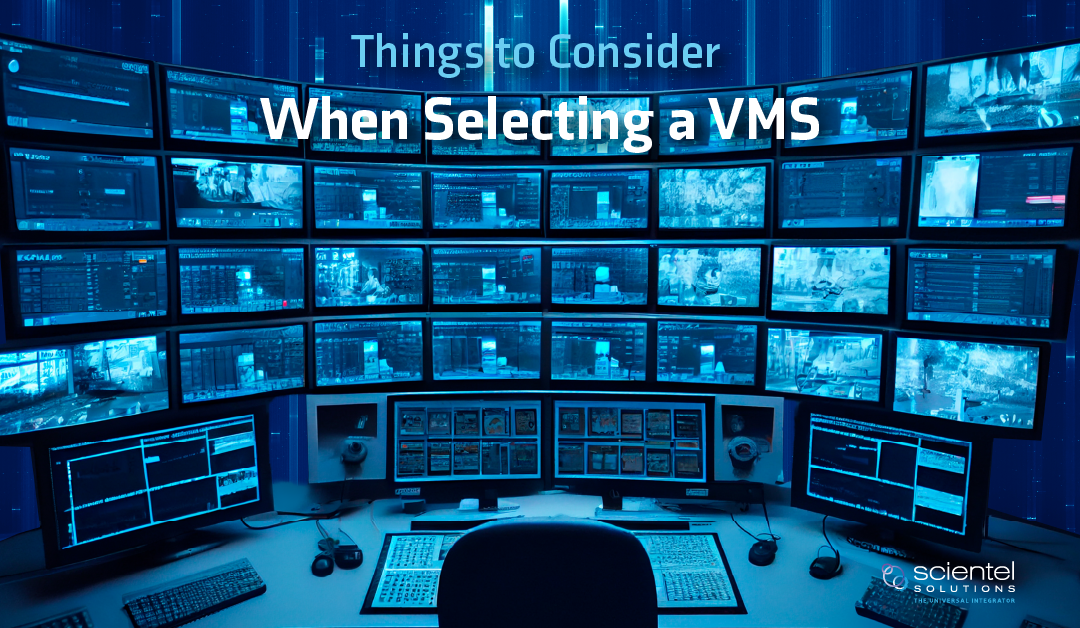New System Install vs Existing System Install
One of the first things that should be considered is if the VMS is going to be part of an entirely new system getting installed, or if it will be installed and integrated into an existing security system and network. If the VMS will be integrated into existing infrastructure, compatibility will be something that needs to be taken into account. With seamless integration, organizations can optimize their deployment and management processes, reducing the time, effort, and resources required for implementation.
Performance and Scalability
Assessing the performance and scalability of a VMS is vital for determining if it can effectively handle the existing workload demands while scaling seamlessly with organizational growth. By assessing its capability to manage current operations and adapt to future expansion, the VMS becomes a reliable and sustainable solution that is tailored to the evolving operational requirements and growth of the organization.
Local Storage vs Cloud-Based Storage
Understanding data storage methods is fundamental when selecting a VMS. The decision between local and cloud-based storage hinges on factors such as performance demands, cost efficiency, scalability requirements, data security protocols, and disaster recovery plans. Determining the most suitable storage solution ensures optimal data management and supports the objectives of the organization’s overall security infrastructure.
Availability and Disaster Recovery
Considerations should be made for the VMS’s capabilities for availability and disaster recovery. Features such as live migration, fault tolerance, backup, and replication can help organizations enhance resilience, mitigate risks, and ensure continuous availability of critical services and applications in the face of disruptions, failures, or disasters.
Vendor Selection and Reputation
By choosing a VMS from a reputable vendor with a track record of providing reliable products and excellent customer support, organizations can mitigate risks, ensure operational stability, and maximize the return on investment of their infrastructure. Evaluating vendor support packages, including technical support, training resources, and community forums and engagement helps to establish a solid foundation for ongoing success and collaboration in managing the VMS environment effectively.
Cost and Licensing
Providing a cost-effective solution for schools, NGFWs have a range of appliances available to suit different budgets and requirements. This allows schools to obtain the security they require without exceeding their allotted budget.
Compliance:
Budgeting is and always will be an important consideration for every organization. Assessing the total cost of ownership of the VMS includes upfront costs, licensing fees, ongoing maintenance expenses, and potential costs associated with scalability and expansion. Comparing pricing models and licensing options will help to determine the best solution for the organization.
The selection of a VMS is a critical component of any comprehensive security solution, as it directly impacts the safety and protection of both personnel and physical assets. Scientel Solutions recognizes the complexities involved in choosing the right VMS and aims to help its customers ensure they have found the solution that best fits their organizational needs. From evaluating system installation requirements to assessing performance, scalability, storage options, and disaster recovery capabilities, each aspect contributes to the overall effectiveness and resilience of the security infrastructure. Additionally, emphasizing the importance of selecting a VMS from a reputable vendor with robust support services ensures ongoing operational stability and maximizes the return on investment.
By carefully weighing these factors, organizations can make informed decisions that align with their security objectives, budget constraints, and long-term business needs, ultimately safeguarding their assets and personnel against potential threats and vulnerabilities.

